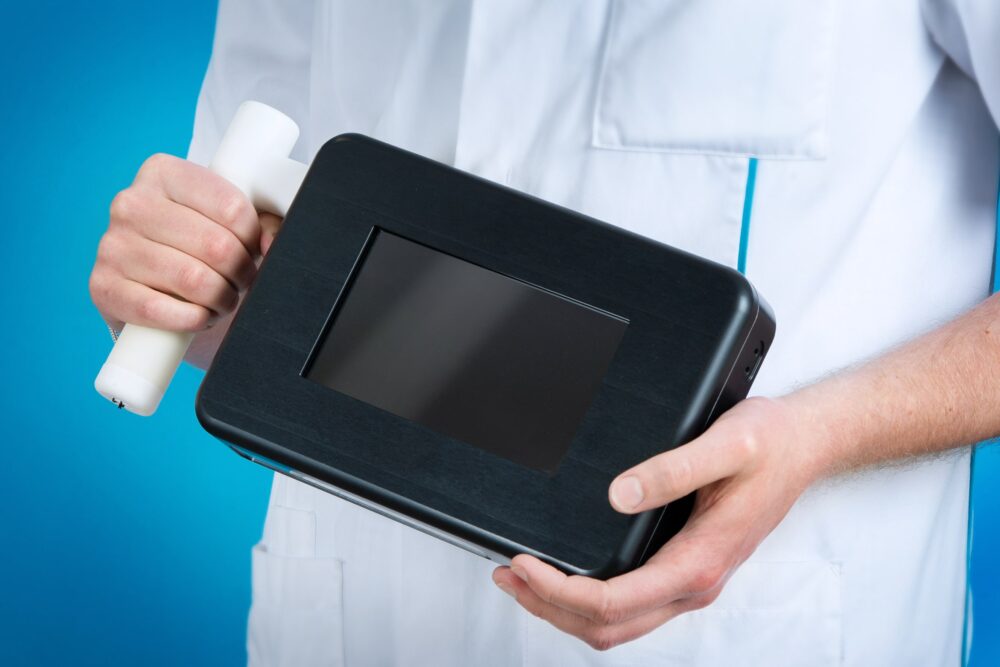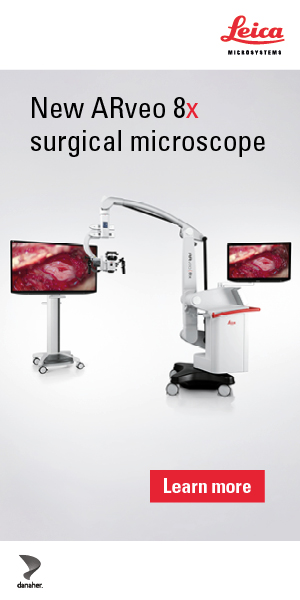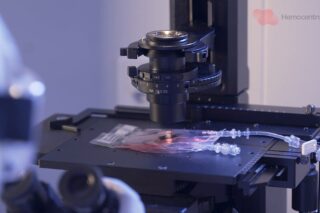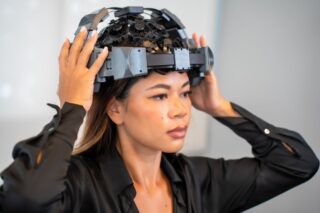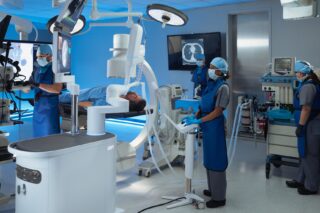Stefan Hummelink explains how the anatomy projector can transform breast reconstruction surgery with real-time anatomical projections and cutting-edge precision.
Stefan Hummelink is a technical physician who currently works as a technical physician in the Plastic Surgery department at Radboud University Medical Center. He has created the Anatomy Projector, an augmented reality projector that gives surgeons “supervision” by helping physicians see anatomical data, such as blood vessels, lymph nodes, nerves, density, and temperature (the most recent feature added to the device) directly on the patient’s skin.
Hummelink developed a prototype of the device, considered the very first of its type, in 2015 during his PhD research. He had been on and off working on his projector since 2012. Now, he is developing the product through the start-up Exolumen, which he co-founded in May 2024 alongside Jeffrey van Rootseler.
While Van Rootseler is the full-time CEO of the company, Hummelink focuses on strategy and research as Chief Technology Officer and Chief Medical Officer. He believes it is important to continue to see patients and to be present in the operating room himself.
How the Anatomy Projector Benefits Reconstructive Surgeries
In reconstructive surgeries, doctors often use the patient’s body tissue, such as for deep inferior epigastric perforator (DIEP) flap breast reconstruction. In this procedure, tissue from the lower abdomen is used to rebuild a breast after a mastectomy or other breast surgery. In such cases, the biggest challenge is to correctly connect the tissue’s blood vessels to the rest of the vascular system—after all, without blood supply, the implanted tissue dies.
Usually, a plastic surgeon views the results of scans on a screen before the operation and then searches for the blood vessels with a Doppler device. Unfortunately, this process is time-consuming and prone to errors. As a result, operations end up taking longer, and the risk of complications increases.
With the Anatomy Projector, the practitioner can project the vessels and other relevant data—taken from a previously done CT scan—directly onto the body using laser light. This feature allows the doctor to work more accurately and quickly. The device is the size of a tablet, and the application works as follows: the plastic surgeon sticks four stickers on the area he or she wants to visualize, and the augmented reality technology projects the data onto the skin.
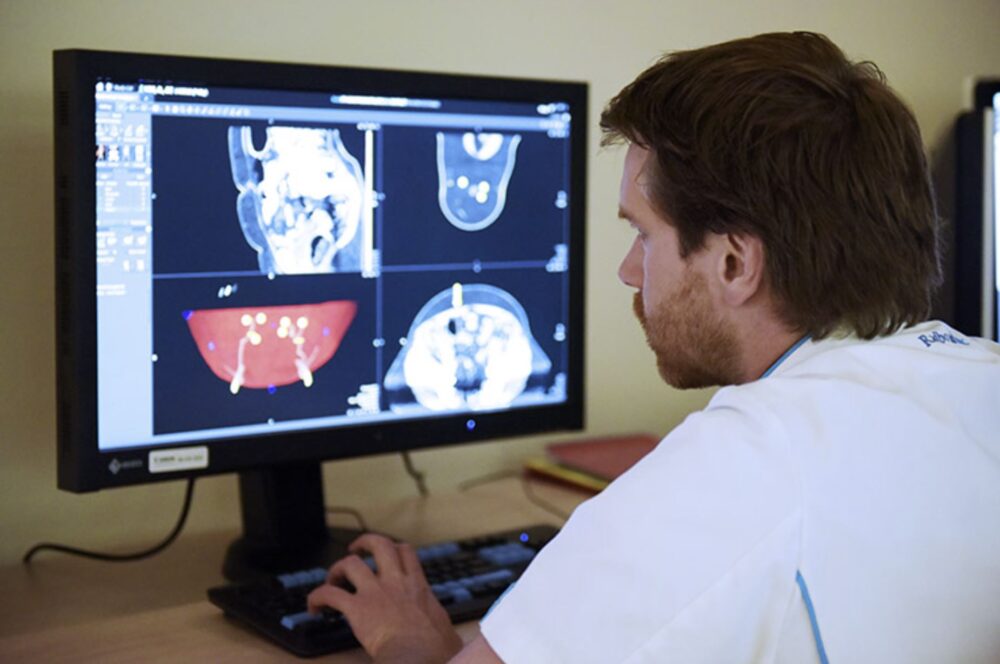
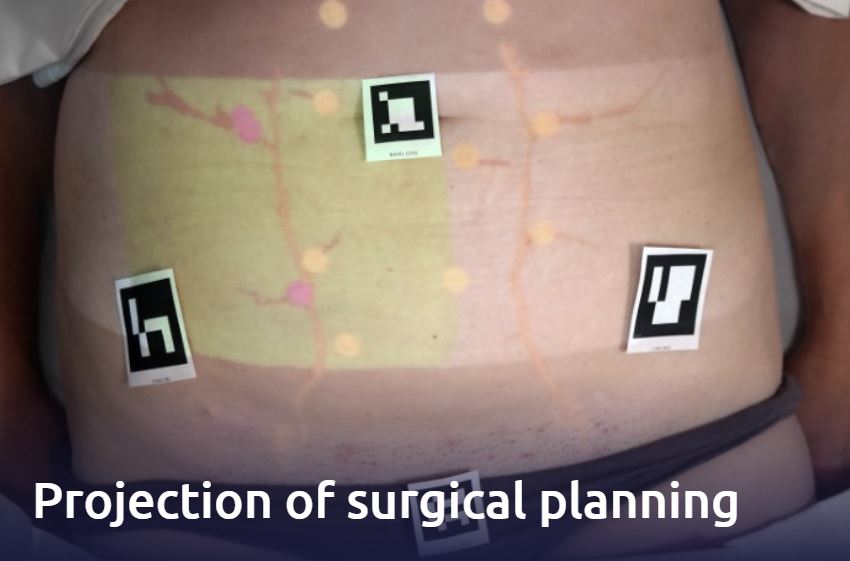
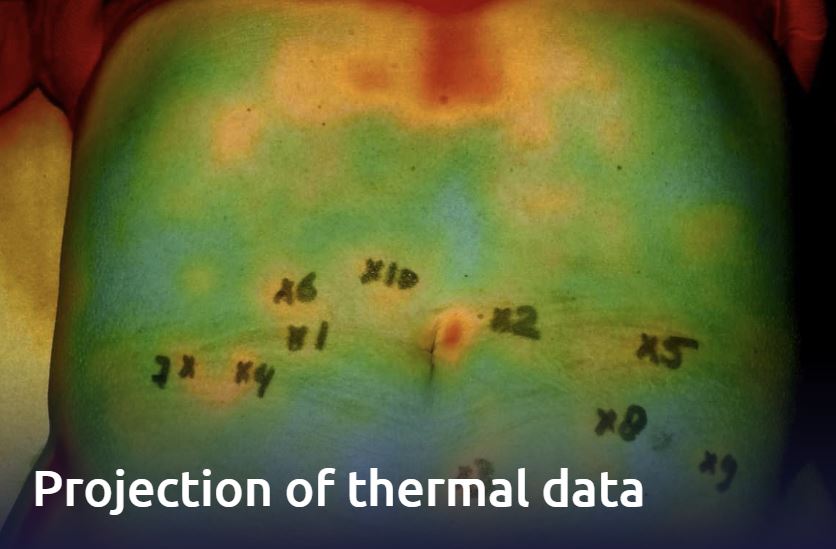
Tech Advances for Surgeons: History and Future
Ten years ago, a product released by a major multinational technology company made it possible for surgeons to put on a pair of glasses that displayed images in the lenses. While that is excellent for some applications, the ideal scenario is to have data available without having to put anything on one’s head—especially if the doctor already wears loupe glasses during procedures. According to Hummelink, the operating room of the future will have various projections available without additional steps for the user, with all these projections being transparent for everyone at the operating table.
As a technical physician working alongside surgeons, Hummelink’s experiences in the operating room played a major role in the design of the Anatomy Project.
“The so-called perforators are really, really difficult to see. When we first enabled the projections, it immediately became much easier to find the penetrating locations of these blood vessels so we could spare them during surgery. To design a device based on firsthand surgical experiences is very fulfilling,” he says.
Firsthand experience allowed Hummelink to identify the specifics of such a projection device to assist surgeons in their work. If medical professionals find a device useful and simple, they’ll be interested in implementing the device in their practice. If not, forget it.
“You can come up with a clever device. If it is not user-friendly, doctors will not use it. That is why we did not opt for glasses. After all, doctors already wear protective glasses or magnifying glasses during surgery. And two glasses on top of each other is not practical,” he told the Dutch Federation of Technology Industries.
The technical challenges and the practical test
One of the technical challenges Hummelink found in developing the projector was the need for the precision required in surgery, especially with microscopic structures.
“The main technical challenge is the alignment, ensuring that what is being projected is properly matched to the patient,” Hummelink said in our interview with him.
They also had to find a way to make the projector insensitive to movements from both the patient and the user.
The Anatomy Projector is currently being used in a test setting at the Radboud University Medical Center for breast reconstruction surgery.
“We aim to clinically validate our various modules, such as thermography and preoperative planning projection. These modules are the sensors we use to visualize different interesting elements and are all part of the projector. For the DIEP flap breast reconstruction, we have already achieved this clinical validation. Now, we are awaiting a publication regarding the thermography of another free flap reconstruction, and in the meantime, we are working on setting up a clinical trial with a new, confidential module.”
“In the DIEP flap breast reconstructions, we use the Anatomy Projector to project the perforators, that is, the tiny blood vessels we need to prepare for the surgery to be successful. This provides health benefits. And we conducted clinical studies on that and found out that the projector saves plastic surgeons an average of seventeen minutes in the preoperative process, and the operation itself becomes nineteen minutes faster. This reduces costs.”
The Next Steps
Exolumen is already working on getting the European MDR and American FDA certifications for the Anatomy Projector.
“We are currently working on all the phases a startup has to go through to make a product hit the market: funding, team building, regulatory, and quality assurance,” he said.
They are searching for partners who share their vision of projected augmented reality and hope to find serious investors to bring this projector to every operating room.
